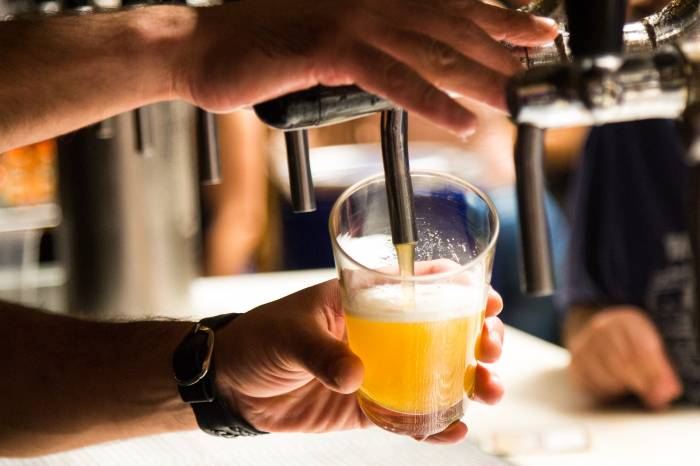U.S. Breweries Reach $37 Billion in Sales as Tariff Costs Hit $450 Million in 2024
2025-10-22
Industry growth driven by craft demand and innovation faces mounting pressure from international trade policies and rising operating expenses

The U.S. brewing industry is facing a period of significant change, according to the newly released 2025 Breweries Market Research Report from Research and Markets. The report, published on October 21, 2025, provides a detailed analysis of the sector, including updated forecasts, recession risk assessments, and the impact of tariffs on operations. Drawing on business surveys and econometric modeling, the report covers data from 2016 through projections for 2029, offering a comprehensive view of the industry’s current state and future outlook.
In 2024, U.S. breweries generated $37 billion in sales, reflecting a robust annual growth rate of 6.6% over the past three years. The industry is made up of 2,940 companies, ranging from large national brewers to small craft operations. The report notes that the sector’s growth has been driven by consumer demand for diverse beer styles, increased interest in local and craft products, and ongoing innovation in nonalcoholic and specialty beverages.
However, the industry is not without its challenges. Tariffs remain a significant cost factor, with the report estimating that breweries paid $450 million in tariff-related expenses in 2024. These costs are primarily linked to imported materials such as aluminum for cans and certain brewing ingredients. The report provides a detailed breakdown of material costs, import percentages, tariff rates, and the countries of origin for these imports, highlighting the ongoing vulnerability of breweries to international trade policy shifts.
Productivity in the sector remains high, with employee productivity measured at $558,696 in 2024. Payroll per employee averaged $55,638, and 5.3% of the workforce held management positions. The average hourly wage for office and administrative roles was $24.96. Operating expenses grew by 6.1% in 2024, with health insurance accounting for 2% of total expenses. The report benchmarks these figures against other expense categories, providing breweries with a tool to compare their own operations to industry standards.
The report also examines financial health through key ratios. The average fixed asset turnover ratio for breweries was 1.9, a measure of how efficiently companies use their assets to generate revenue. Additional benchmarks include net income as a percentage of revenue, asset-to-liability ratios, and return on sales.
State-level data reveals significant variation in market size, revenue per employee, and payroll costs across the country. The report ranks states by these metrics and analyzes sales as a percentage of both manufacturing output and gross domestic product. Plant utilization rates and reasons for underutilization are tracked quarterly, offering insight into operational efficiency and capacity challenges.
Industry segmentation is another focus of the report. It breaks down the market by company size, business structure (including C-corporations, S-corporations, partnerships, and sole proprietorships), and concentration among the top 50 companies. This segmentation helps identify trends in consolidation and competition within the sector.
Looking ahead, the report provides forecasts for industry growth, pricing trends, payroll costs, and productivity through 2029. It also assesses recession risk and offers scenario analysis to help breweries plan for economic downturns or shifts in consumer demand.
The methodology behind the report relies on annual business surveys completed by breweries nationwide. These surveys collect detailed information on revenue, costs, labor, capital investment, product lines, locations, and wages. Analysts then use this data in proprietary econometric models that account for macroeconomic trends and industry-specific factors.
Industry professionals use this report for a range of purposes, including market sizing, benchmarking, strategic planning, due diligence, cost-cutting initiatives, and opportunity evaluation. The depth of data allows companies to conduct gap analysis and streamline operations based on reliable benchmarks.
The U.S. brewing industry includes companies engaged in producing beer, ale, malt liquors, and nonalcoholic beer. As consumer preferences continue to evolve and economic conditions shift, breweries are expected to adapt through innovation, operational efficiency improvements, and strategic planning informed by comprehensive market research.
The full 63-page report is available from ResearchAndMarkets.com and includes over 100 data sets covering every aspect of the industry’s performance from 2016 through projected figures for 2029.
Founded in 2007, Vinetur® is a registered trademark of VGSC S.L. with a long history in the wine industry.
VGSC, S.L. with VAT number B70255591 is a spanish company legally registered in the Commercial Register of the city of Santiago de Compostela, with registration number: Bulletin 181, Reference 356049 in Volume 13, Page 107, Section 6, Sheet 45028, Entry 2.
Email: contact@vinetur.com
Headquarters and offices located in Vilagarcia de Arousa, Spain.